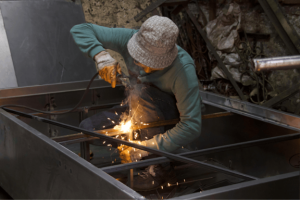Last Updated on October 27, 2025 by teamobn

Before you jump into checklists and task lists, it helps to understand the groundwork that sets you up for success. To get started, follow our 6 essential preparation steps — they’ll walk you through budgeting, permits, and planning so your project begins on the right foot.
Contents
The Home Owner Builder Checklist
What Is a Home Owner Builder Checklist and Why It Matters
A home owner builder checklist is a step-by-step plan that outlines the entire building process from start to finish. It includes everything from budgeting and design to permits, trades, materials, inspections, and final finishes. Think of it as a roadmap that keeps you on track and helps you avoid costly mistakes.
Building a home yourself involves more than construction. You manage money, timetables, safety, and legal requirements. Relying on recollection or guessing makes it easy to miss steps. A well-organized checklist lets you focus on quality work.
Peace of mind is more essential. You know what follows. You know what to expect. This arrangement minimizes stress and improves decision-making. You can control subcontractor hiring with the checklist.
Many first-time owner builders don’t realize how much admin work happens before construction begins. A checklist makes that visible. It also helps you spot gaps in your planning and encourages you to do your research. The more complete your checklist is, the smoother the project will be.
In short, the home owner builder checklist isn’t just a handy tool—it’s essential. It’s what turns a chaotic project into a manageable one.
Common Mistakes First-Time Owner Builders Make
Building your own home is exciting, but it also comes with a steep learning curve. First-time owner builders often run into problems that could have been avoided with better planning, research, or support. That’s where a detailed home owner builder checklist can make all the difference. It gives structure to your project and helps prevent unnecessary setbacks. Below are some common missteps that many new owner builders encounter.
Underestimating the Budget
One of the biggest mistakes is setting a budget that’s too optimistic. It’s easy to focus on the cost of materials and labor while ignoring permits, insurance, tool hire, and unexpected delays. Many owner-builders forget to include a buffer for cost overruns. Prices change, and delays happen. Without a financial cushion, even minor issues can put the whole project at risk.
Skipping Pre-Construction Planning
Some owner builders are eager to start digging and skip over key steps like soil testing, site assessments, or detailed design work. This often leads to costly surprises later. Starting construction without finalizing your plans can result in having to redo work or deal with compliance issues. A solid home owner builder checklist highlights these early steps so you don’t jump ahead too soon.
Poor Time Management
Most first-time builders don’t realize how long the process takes. Tasks like getting permits, waiting for inspections, or scheduling trades can stretch out timelines. If you’re managing the project yourself while working a regular job, time becomes even tighter. Without a realistic plan and timeline, delays start to stack up and create pressure. Time management isn’t just about scheduling trades—it’s about knowing what needs to happen before they even arrive.
Not Vetting Trades and Suppliers Properly
Hiring subcontractors based solely on price often backfires. You need to check references, licenses, and insurance. It’s also important to communicate clearly about expectations, timelines, and payment schedules. Rushed decisions can lead to poor workmanship, delays, or even legal issues. A checklist that includes trade vetting steps can keep this process professional and organized.
Ignoring Safety and Legal Requirements
Owner builders are legally responsible for the safety of the site. That includes fencing, signage, PPE, and safe access for workers. Some first-timers skip safety plans or overlook WorkCover obligations. This can lead to accidents, fines, or stop-work notices. A detailed home owner builder checklist should cover these legal basics and prompt you to get the right documentation early on.
Trying to Do Too Much Alone
Taking on too many roles—project manager, laborer, accountant—can burn you out fast. It’s tempting to save money by doing everything yourself, but there’s a tipping point. Know your limits and bring in help when needed. That might be a consultant, building supervisor, or just experienced friends lending a hand.
Forgetting Final Steps
By the time you get to painting and landscaping, it’s easy to rush or cut corners. But final inspections, occupancy certificates, and site cleanup are all required before you can move in. Finishing strong matters just as much as starting well.
Mistakes are part of any project, but you can avoid most of them with a clear plan and a reliable support system. A comprehensive home owner builder checklist will guide you through each stage, reduce stress, and help you stay in control from start to finish.
Pre-Construction Paperwork: The Most Overlooked Step
Before the first shovel hits the ground, there’s a mountain of paperwork that needs to be in order. Many first-time owner builders overlook this phase because it’s not as exciting as choosing materials or laying a slab. But skipping or rushing through the pre-construction documents can stall your entire project. Worse, it can leave you exposed to legal or financial risks that are hard to recover from later.
Building a home isn’t just about construction. It’s also about compliance. Every step must meet your local building authority’s rules. That means getting the right permits, following the building code, and ensuring your site meets zoning and environmental regulations. If you miss any of these, you may face delays, fines, or a stop-work order. A solid home owner builder checklist will always start with paperwork because it sets the foundation for everything else.
You’ll need to secure a building permit. This usually requires detailed plans, engineering reports, and sometimes energy assessments. Your local council or building authority may also ask for site surveys and drainage plans. Each requirement depends on your location, so don’t assume one checklist fits all. Take the time to research what’s needed in your state or region.
Before you move from planning to actual construction, it’s worth taking a step back to make sure everything aligns — your permits, paperwork, and schedule. To strengthen your preparation and avoid early setbacks, complement your plan with these seven owner-builder tips that focus on practical ways to stay organized and efficient once work begins.
Conclusion
Building your own home is a major commitment, but the right preparation makes all the difference. A detailed home owner builder checklist keeps you organized, compliant, and in control. With each step clearly mapped out, your dream home becomes much more achievable.
Once you’ve checked off everything on your list and feel confident in your preparation, it’s time to move from planning to action. To take the next step, learn how to build your first home successfully — our comprehensive guide walks you through the full construction process from foundation to finish.






